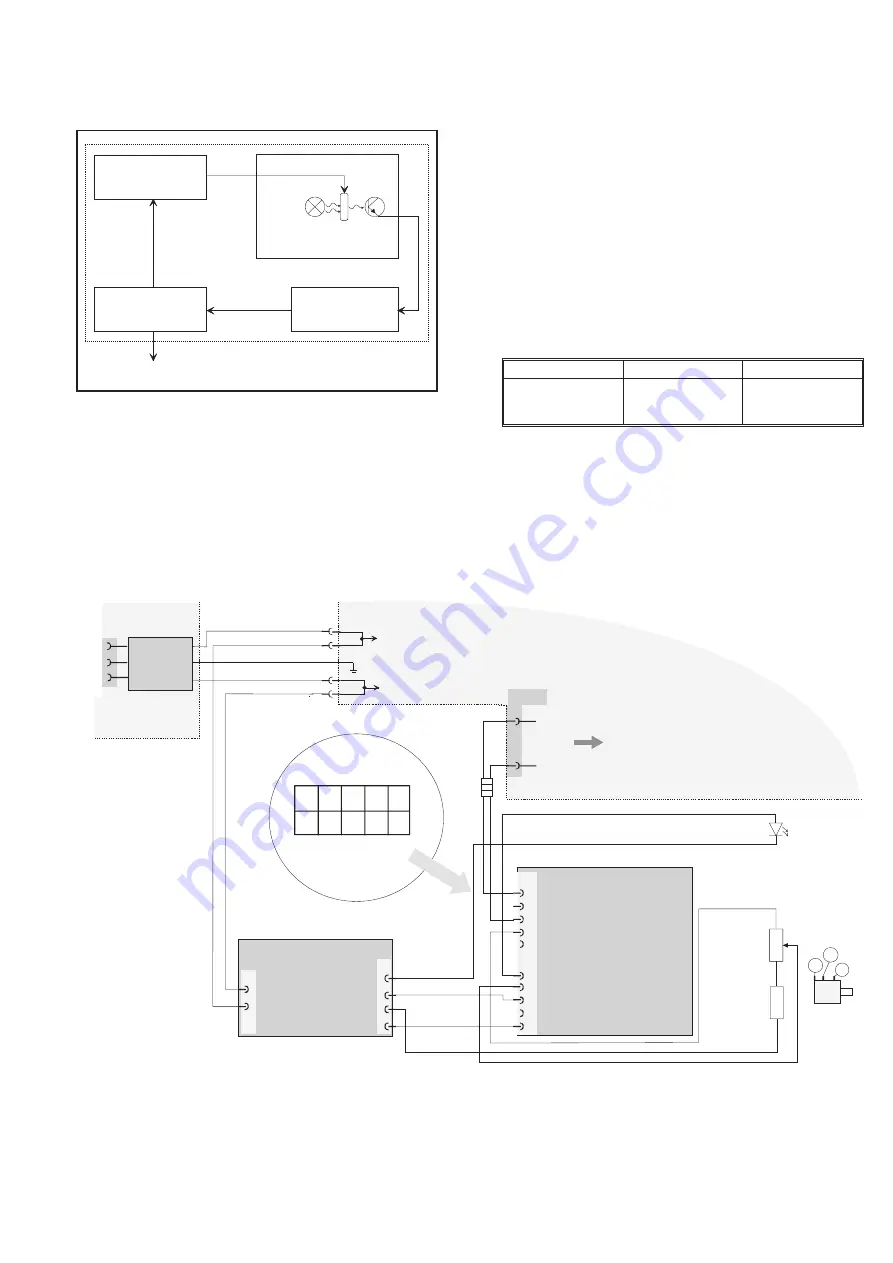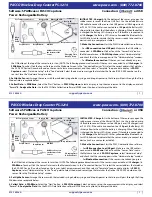
quency is locked to the atomic-standard “resonance frequency” of
the rubidium atom, see Fig. 9-14.
Amicrowave signal that is derived from the VCXO tunable oscillator
is applied to rubidium vapor contained within a heated glass cell.
Light from a rubidium lamp is passed through the cell and
illluminates a photo detector causing current to flow in the detector.
As the applied microwave signal approaches the frequency that cor-
responds to the ultra stable rubidium atomic resonance frequency, the
rubidium light entering the glass cell is absorbed by the rubidium va-
por to an increased extent causing a decrease in the photo detector
current. This “darkening” effect is used to generate an error signal
which permits continuous regulation of the quartz crystal oscillator
output frequency, thereby locking it to the frequency of the atomic
standard .
Calibration Adjustments
NOTE: Before Calibration Adjustment, the Rubidium time
base must have been in operation for more than 24
hours.
Required Test Equipment
Setup
–
Connect the counter to the line power.
–
Press PRESET, then ENTER.
–
Press AUX.
Calibration Adjustments 9-13
Type
Performance
Model
10 MHz reference
£
1x10
-10
Calibrated Rubidium
oscillator or Cesium
atomic standard
Table 9-5
Required test equipment.
A2
RUBIDIUM
OSCILLATOR
TYPE LPRO
D1
UNLOCKED
UNIT 1
J9
J10
SAFETY EARTH
5
3
2
1
3
1
2
90 to
260v
CNT-85R REAR
PANEL
LINE
FILTER
FREQ.
ADJUST
REAR VIEW
OF P3
3
J24
R1
1k
P3
1
2
3
4
5
6
7
8
9
10
A1
AUX POWER
SUPPLY
5
4
+24V
0V
P2
3
1
N
L
P1
1
2
9
10
0V
3
2
+24V
L1-L3
J3
J4
R2
3.83k
10 MHz
Fig. 9-13
Wiring diagram showing the interconnections between the Rubidium timebase, its power supply, and the main PCA.
PM6685R REAR
PANEL
Frequency multiplier/
Synthesizer
20 MHz Voltage tunable
Quartz Oscillator
(VCXO)
Feedback
electronics
(Servo)
DC-error
signal
DC correction
voltage
6.8 GHz
10 MHz output
Rubidium
lamp
Rubidium
cell
Detector
Fig. 9-14
Block diagram showing the principle of a Rubidium
Atomic Standard.
Summary of Contents for PM6685
Page 1: ...Programmable Frequency Counter PM6685 PM6685R Service Manual ...
Page 4: ...This page is intentionally left blank ...
Page 5: ...Chapter 1 Safety Instructions ...
Page 7: ...Chapter 2 Performance Check ...
Page 12: ...This page is intentionally left blank 2 6 Performance Check Options ...
Page 13: ...Chapter 3 Disassembly ...
Page 16: ...This page is intentionally left blank 3 4 Disassembly PM9691 or PM9692 Oven Oscillator ...
Page 17: ...Chapter 4 Circuit Descriptions ...
Page 33: ...Chapter 5 Repair ...
Page 42: ...This page is intentionally left blank 5 10 Safety Inspection and Test After Repair ...
Page 43: ...Chapter 6 Calibration Adjustments ...
Page 49: ...Chapter 7 Replacement Parts ...
Page 53: ...Replacement Parts Mechanical Parts 7 5 80 Lug bent 15 to lock ...
Page 62: ...This page is intentionally left blank 7 14 Replacement Parts GPIB Interface PM9626B ...
Page 63: ...Chapter 8 Drawings Diagrams ...
Page 65: ...This page is intentionally left blank Drawings Diagrams 8 3 ...
Page 66: ...Main PCB Component layout 8 4 Drawings Diagrams Top View ...
Page 68: ...Main PCB Component layout 8 6 Drawings Diagrams Bottom View K2 K1 K3 K4 ...
Page 70: ...This page is intentionally left blank 8 8 Drawings Diagrams ...
Page 72: ...8 10 Drawings Diagrams This page is intentionally left blank ...
Page 74: ...8 12 Drawings Diagrams This page is intentionally left blank ...
Page 76: ...Display Keyboard PCB Component layout 8 14 Drawings Diagrams ...
Page 78: ...GPIB Unit PM9626B Component layout 8 16 Drawings Diagrams ...
Page 79: ...GPIB Unit PM9626B Drawings Diagrams 8 17 ...
Page 80: ...This page is intentionally left blank 8 18 Drawings Diagrams ...
Page 81: ...Chapter 9 Appendix ...
Page 89: ...Replacement Parts 9 9 This page is intentionally left blank ...
Page 90: ...Power Supply Component layout 9 10 Replacement Parts BOTTOM SIDE TOP SIDE ...


































